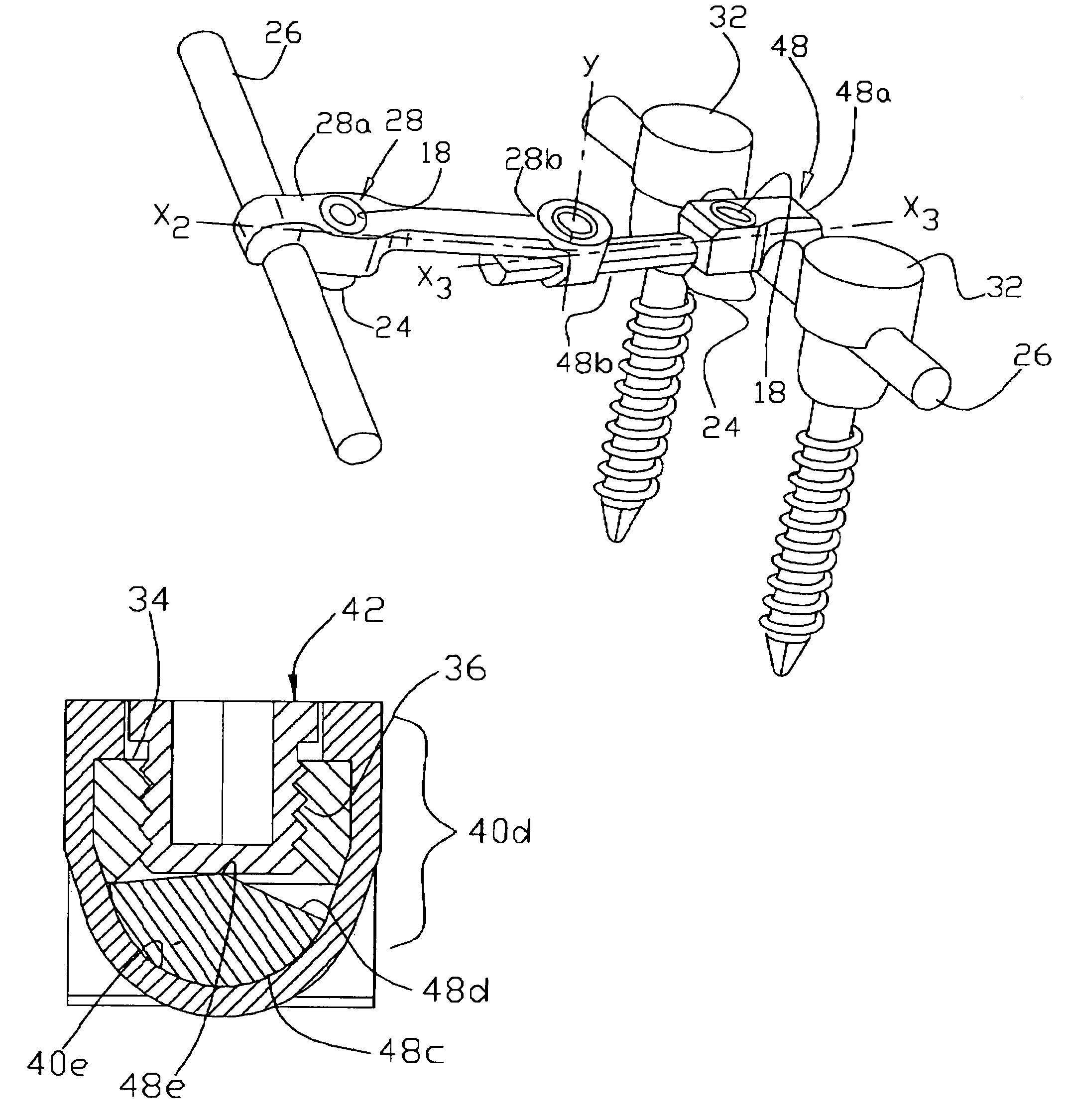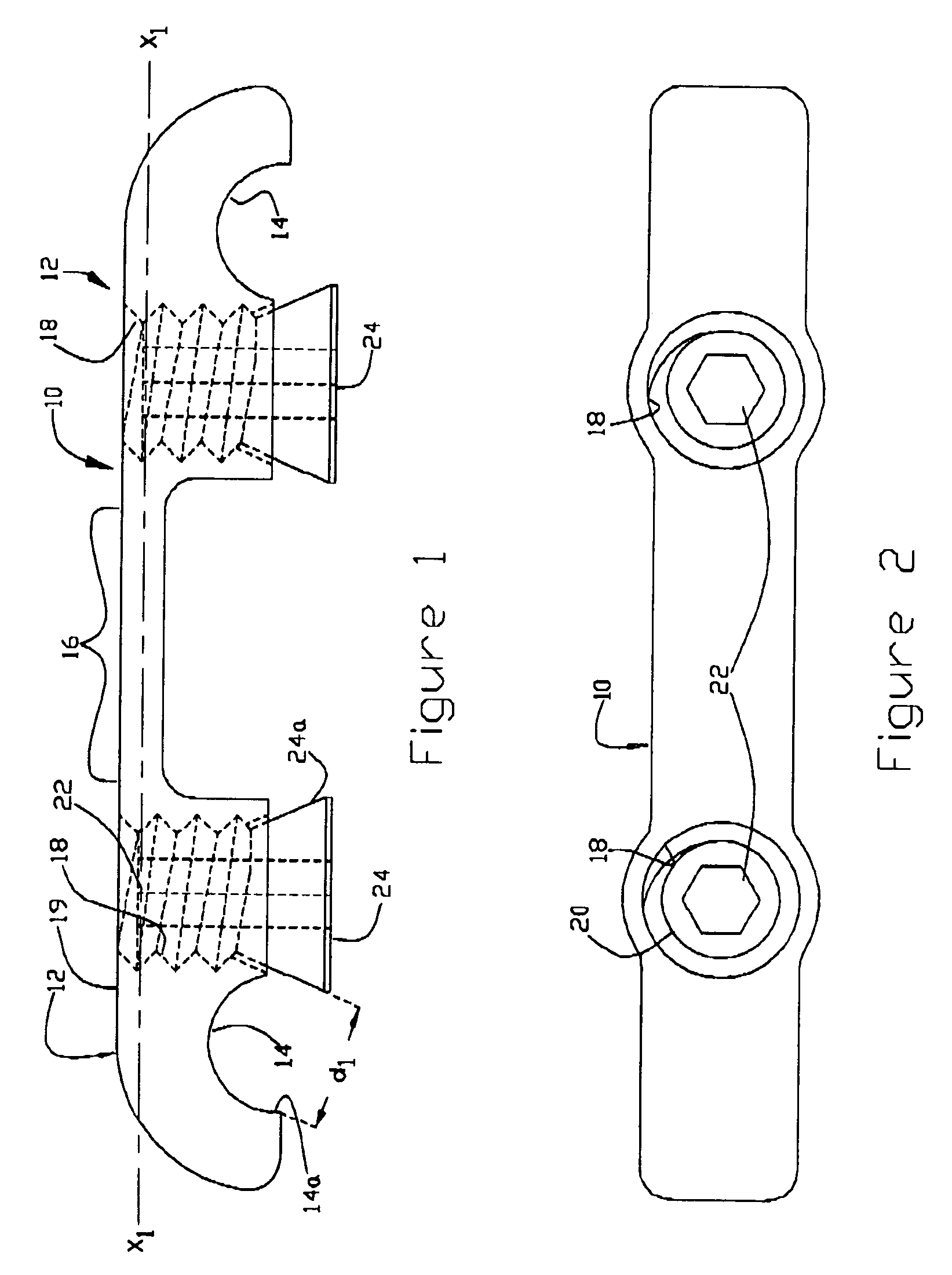Transverse connector system
a technology of transverse connectors and connectors, applied in the field of transverse connector systems, can solve the problems of increased soft tissue retraction and/or dissection, design of tightening mechanism, and disadvantages, and achieve the effect of simplifying the installation procedur
- Summary
- Abstract
- Description
- Claims
- Application Information
AI Technical Summary
Benefits of technology
Problems solved by technology
Method used
Image
Examples
Embodiment Construction
[0026]Referring now to FIGS. 1 and 2 an elongated unitary connector 10 is arranged to span the distance between two spinal rods. The connector is formed with end sections 12 defining rod receiving surfaces, grooves or recesses 14 and an intermediate bridge section 16. A threaded clamping pin, e.g., set screw, receiving bore 18 is located adjacent each groove 14 and extends at a right angle to the top surface 19 and the longitudinal axis X1 of the member 10 as illustrated. This arrangement overcomes the problems associated with prior art spinal rod securing systems which require the use of tightening instrumentation oriented at an angle to the wound site. A pin 20, in the form of a set screw with an internal hexagonal wrench receiving surface 22, e.g., to accommodate an allen wrench, and an enlarged head 24 is threaded into each bore 18 from the bottom to complete the system.
[0027]The rod receiving grooves 14 are generally semicylindrical in shape with a radius slightly greater than ...
PUM
 Login to View More
Login to View More Abstract
Description
Claims
Application Information
 Login to View More
Login to View More - R&D
- Intellectual Property
- Life Sciences
- Materials
- Tech Scout
- Unparalleled Data Quality
- Higher Quality Content
- 60% Fewer Hallucinations
Browse by: Latest US Patents, China's latest patents, Technical Efficacy Thesaurus, Application Domain, Technology Topic, Popular Technical Reports.
© 2025 PatSnap. All rights reserved.Legal|Privacy policy|Modern Slavery Act Transparency Statement|Sitemap|About US| Contact US: help@patsnap.com



